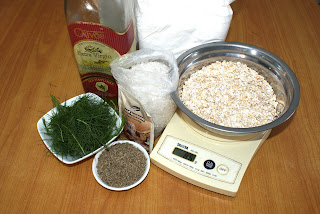Rasbora pauciperforata, (Weber & De Beaufort, 1916) from the Family Cyprinidae, (The Red Line Rasbora)
A small freshwater fish with a streamlined, compressed body, the Red Line Rasbora has a wide habitat range from West Malaysia, Indonesia (Sumatra) and Borneo. It is an inhabitant of peat swamp basins, pools and natural ditches. It is usually found in clean, tannic, soft waters (2-4˚H) with a pH ranging from 3.5 to 6.50. Water temperatures in their natural elements are typically 25˚-28˚C. It favors indirect sunlight and quiet, deep-shaded waters with very gentle currents.
Although the body is well developed, it struggles in fast flowing currents and will usually seek refuge in crevices or less turbulent waters. It can be found in depths ranging from shallow up to a meter deep. Banks with well-developed vegetation such as weeds, over-grown grass and floating plants are their favorite haunts where they typically swim within mid-water levels. When they encounter danger, they usually attempt to escape by diving to the floor bed or seeking refuge in thick vegetation where they will remain until the danger passes over.
A single red band runs from the tip of the mouth to the base of the tail. The scales above the line have a peppery dust pattern on the edges while the scales on the belly have a wedge-shape pattern comprising of small dark pigmentation cells. Fins do not have any markings. Overall, captive fishes kept in acidic, tannic waters will bring out true colors.
Sensitive to heat, light and vibrations, the Red Line Rasbora is quite shy and generally avoids open spaces devoid of plants and bright spaces. In a bare tank, specimens usually sulk at the bottom of the darkest corner. A school of at least five fishes is recommended. Singular fishes are timid but gain confidence in the company of fish schools, even if it is of different species.
Wild caught specimens acclimatized fairly fast in captivity, accepting frozen and dry foods readily. Bright lights should be avoided. A typical tank set-up should comprise of a heavily planted tank with indirect light. Frequent water changes with the replacement water filtered over peat moss is highly recommended to encourage the fishes to show their prominent red line. Once properly acclimatized, the Red Line Rasbora will be emboldened to show itself in open spaces but they will usually not stray away from nearby plants or cover. They typically swim in short distances, hover momentary by twitching their fins to stay suspended and dart around in bursts of speed. The fish is a fairly good jumper so a tank cover is recommended.
This fish’s diet in the wild is not really known but their habitat usually supports a wide range of plankton matter such as aquatic larvae, insects, tubificid worms and small crustaceans such as Daphnia. The Red Line Rasbora will adapt to frozen and dried foods readily.
The Red Line Rasbora can reach a length of 6 cm. In the wild, they typically form small to medium sized loosely-formed schools. Females are larger than the males. A very peaceful fish, this is an excellent species for a community bio-type tank.

































![The Notebook [Blu-ray]](http://ws.amazon.com/widgets/q?MarketPlace=US&ServiceVersion=20070822&ID=AsinImage&WS=1&Format=_SL160_&ASIN=B003B1X80Y&tag=ecologicord-20)
![The Bucket List [Blu-ray]](http://ws.amazon.com/widgets/q?MarketPlace=US&ServiceVersion=20070822&ID=AsinImage&WS=1&Format=_SL160_&ASIN=B0016P8OAG&tag=ecologicord-20)
![The Blind Side [Blu-ray]](http://ws.amazon.com/widgets/q?MarketPlace=US&ServiceVersion=20070822&ID=AsinImage&WS=1&Format=_SL160_&ASIN=B002VECM72&tag=ecologicord-20)

